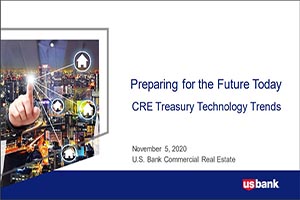
Do I need a financial advisor?

What is CSDR, and how will you be affected?

It should come as no surprise that the most successful registered investment advisors (RIAs) separate themselves from the pack by using technology to their advantage. But what exactly are heavy-hitting RIAs using technology for? And what software components go into the technology stack for the most successful advisors?
The answers to the first question are straightforward.
Top advisors use technology for everything from mundane tasks such as keeping the books and managing payroll to sophisticated data analysis and artificial intelligence.
Alan Markarian, senior vice president of U.S. Bank, explained it this way: “The best technology is designed for advisors and the way they do business – ultimately freeing up time and resources so they can focus more attention on their core competencies. This means technology needs to be flexible and agile enough to support highly specific needs without getting in the way.”
According to Financial Planning: “Successful advisors are far more likely to leverage artificial intelligence and data analytics to understand client behavior and preferences. They are also more likely to leverage risk management and tax-optimization tools, with real time market data and greater computing power, to build customized client portfolios using sophisticated investing strategies and specialized techniques.”
The idea behind all that technology isn’t to replace the advisor. Instead, it’s about removing or streamlining routine tasks, so RIAs can concentrate on serving clients with expert advice.
“The best technology is designed for advisors and the way they do business – ultimately freeing up time and resources so they can focus more attention on their core competencies.”
The ability to focus on core competencies is enhanced when RIAs choose the right custodians. As technology grows in importance for advisors, the way it plays into their relationship with RIA custodians also warrants consideration. Not only is it crucial to evaluate the tech options a custodian’s platform offers, you should also carefully assess what support infrastructure is in place to help you select and integrate systems.
Markarian emphasized that the key features to look for include:
Recently, the rise of robo advisors has turned up the heat on RIAs to leverage their own tech to compete. This trend is driving many advisors to expand their service offerings – everything from insurance to retirement income to estate planning. They know they need to distinguish themselves in ways robo advisors can’t match, and technology can play a key role in establishing that differentiation.
“New, improved technology is always emerging,” Markarian said. “Not only is this beneficial by its own merit, but more importantly, it can be leveraged to help you enhance your focus on relationship building, business growth and client service.”
This heightened customer-centric emphasis may be why the most important piece of software for advisors isn’t financial planning software. According to a 2019 survey conducted by T3, 52.29% of advisors rate customer relationship management (CRM) software as their most valuable business tool. Financial planning software came in second, with 22.9% of respondents rating it at the top of their stack.
In general, this research showed that younger planners preferred financial planning software, while those with more experience skewed in favor of customer relationship tools.
“The takeaway here,” according to the survey, “is that if you are not deriving significant value from your CRM, you are either doing something wrong, using the wrong software, or both.”
Learn more about our custody solutions and services for registered investment advisors.
Related Content


